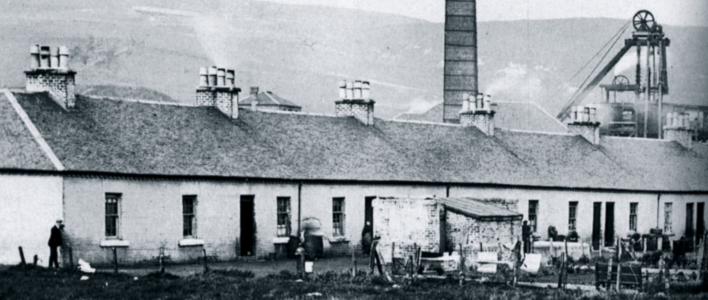Bill Shankly – footballing legend and Glenbuck’s most celebrated son – once noted that the mining village he called home felt akin to ‘outer Mongolia’ in the long dark Ayrshire winters. On Friday the 2nd of September, 109 years to the day Shankly was born, our team of researchers from the Scottish Oral History Centre, former residents and local councillors were much more fortunate with the weather. Under sun-split Ayrshire skies, we were taken on a tour of the Glenbuck memorial site by former residents Sam Purdie and Barbara Alexander (who also happens to be Bill Shankly’s niece), both of whom kindly shared stories of life in the miners’ rows.
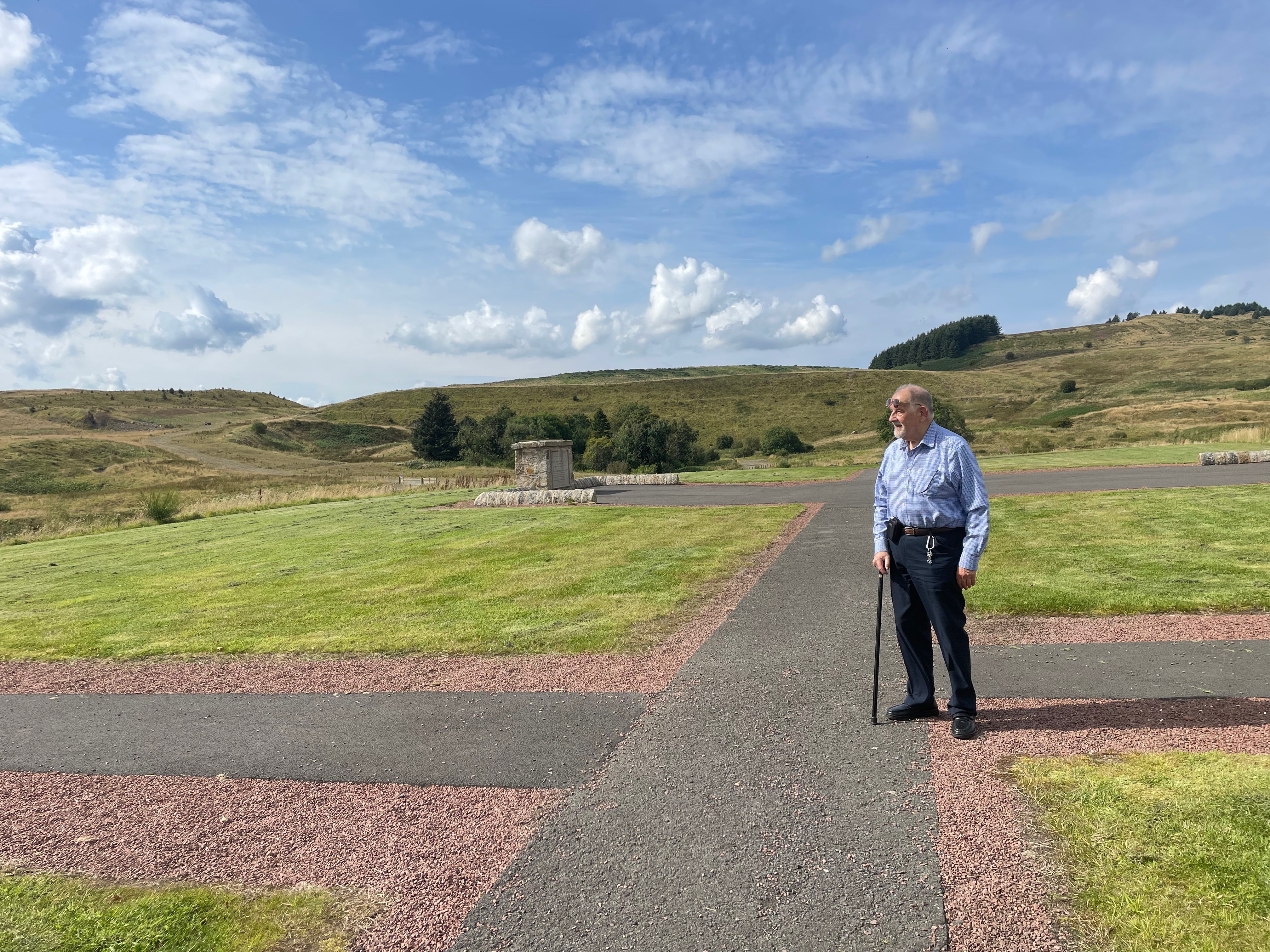
IMAGE: Sam looking out over the memorial site
These days, the Glenbuck memorial site which opened in 2019 is only accessible by car from the A70. However, as Sam told us, in the early 20th century, three different railways ran through Glenbuck, transporting goods and people to and from the busy mining village. While the import and export of industrial labour and products were the source of many of these journeys, people also came for leisure. In particular, many came to play with the local football team, the Glenbuck Cherrypickers, who held matches on a stretch of land behind the Monkey Row. As Sam recalled, visiting teams (and the referee) often had to sprint over the hill to make it on the train out of Glenbuck, and ‘they had to be fast if they happened to win’.
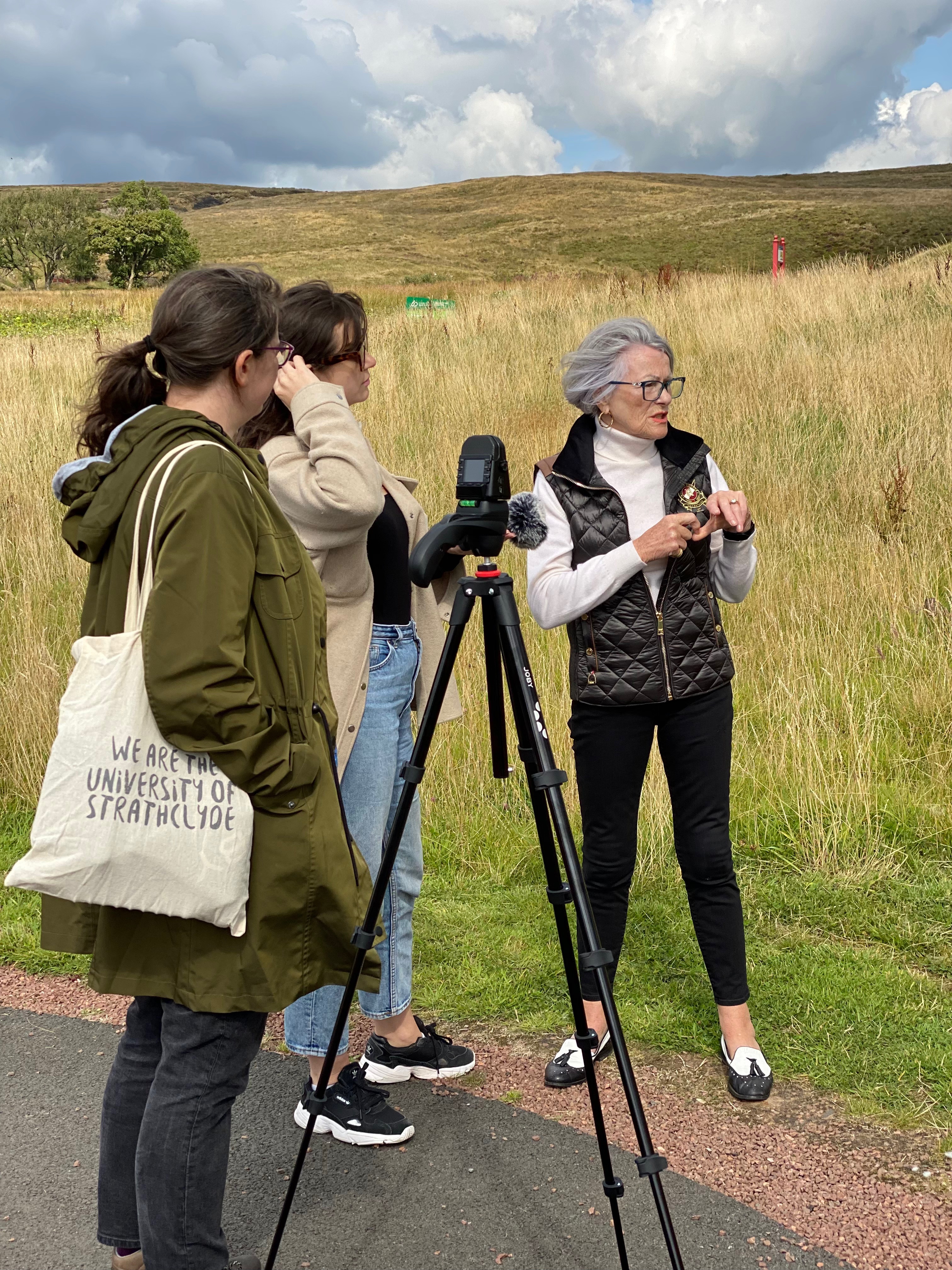
Image: Barbara talking to project researchers Yvonne and Kate q about her family, the Shankly’s
As well as mining, football was the village’s other great export, with an astonishing 55 professional footballers emerging from Glenbuck and going on to decorated careers all over the country. The Cherrypickers themselves were highly popular too; as Sam recounted, ‘occasionally you would find out the Cherrypickers had five right-wingers’ as spectators jumped over the rope to join in the game. The Cherrypickers disbanded in the 1930s, after the pit closed. Their former pitch is now an empty expanse of marshy field, its former life as homeground to some of Scotland’s footballing greats demarcated by four small white posts.
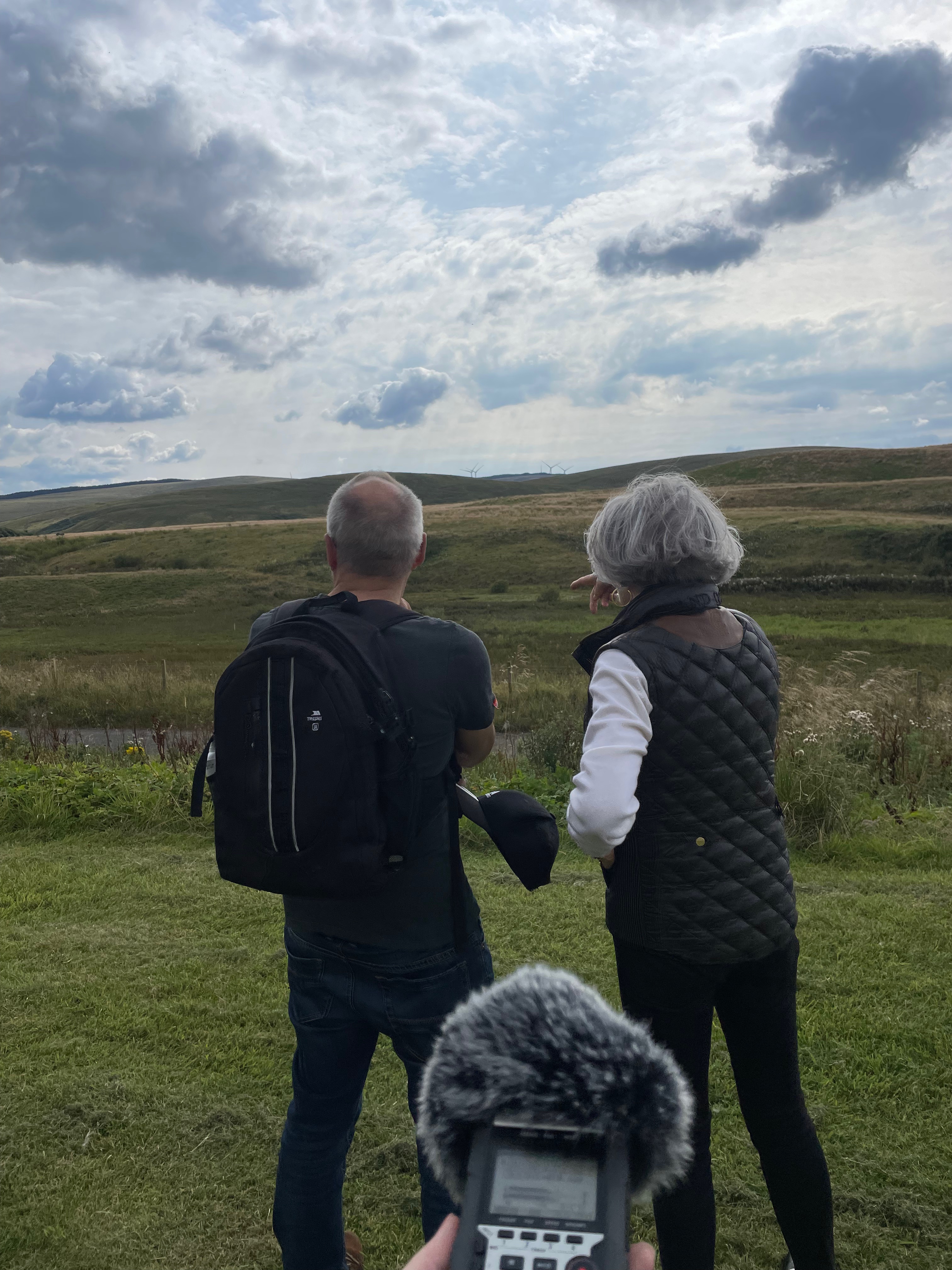
Image: Barbara telling Arthur McIvor about her memories of the football pitch
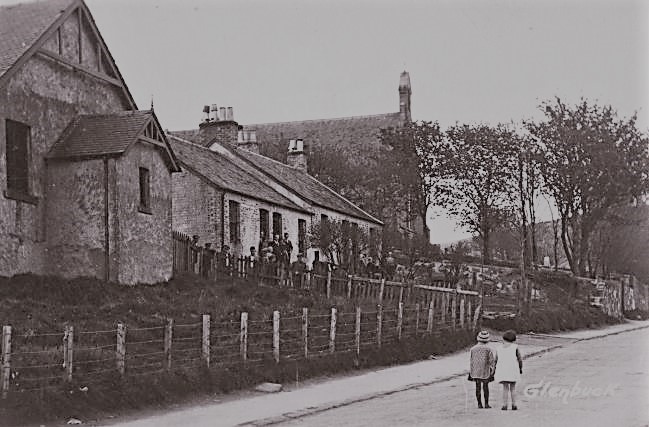
Image: The Monkey Row- the family on the doorstep has been identified as the Shankly’s
Reflecting on the volume of footballing talent which emerged from Glenbuck, Barbara recalled that the sport was a chance for those who worked in the pits to take in as much fresh air as possible after days spent underground, as well as a potential escape from some the difficulties of heavy labour. But even its most well-travelled footballing heroes often returned home. During our visit, Barbara pointed out the site of the former Co-op in the village, telling us how it once held the FA Cup: after Sandy Brown and Sandy Tait won the trophy with Tottenham Hotspur in 1901, it was brought back on the train and briefly displayed in the Co-op’s window.
Barbara also recalled the texture of life for women in the village. While some later took on jobs such as seamstresses or in the service industry, most commonly women found their time occupied with the management of the home. As Barbara noted, in the case of the Shankly family, managing a home with twelve residents in a village with no running water or electricity was more than a full-time job, and making ends meet was often deeply challenging. The village was served by a butcher and some families grew vegetables, though Barbara imagined for the older generation, food may sometimes have been scarce. Barbara also remembered her time as a pupil at Cumnock Academy, which involved leaving her house in Glenbuck at 7am and returning at 6pm, further testament to the challenges and relative isolation of village life.
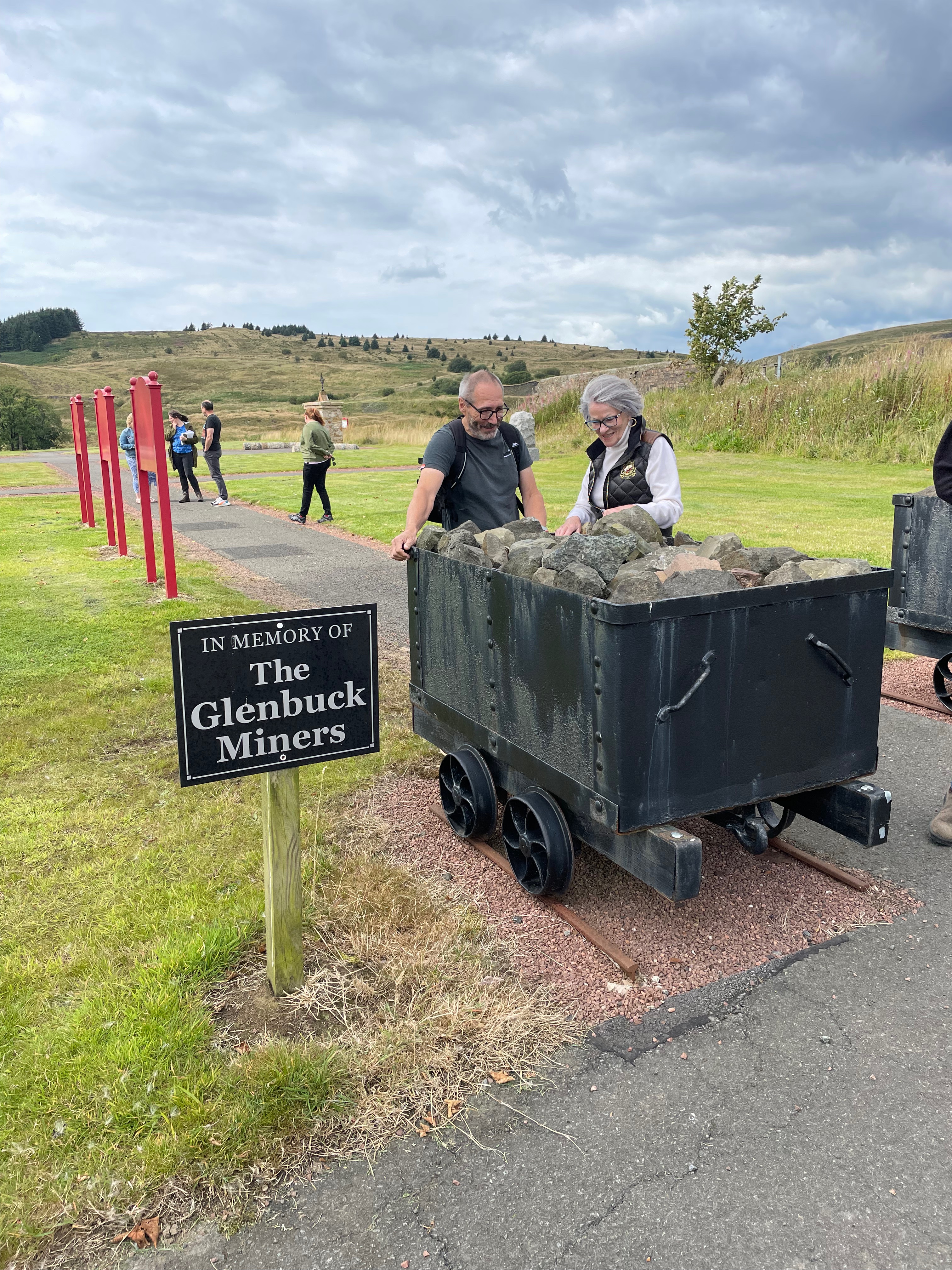
Image: The mining memorial at the entrance to the site
Despite many of the hardships of life in the village, its residents found time to enjoy themselves. Some, like Barbara’s grandfather Johnny Shankly – a middle-distance runner – would walk to the picturehouse in neighbouring Muirkirk. Poignantly, Barbara and Sam both recalled the deep sense of community in the village; for many, free time involved poaching the abundant rainbow trout, partridges, hares or rabbits, which were then shared with others in the village, such as pensioners.
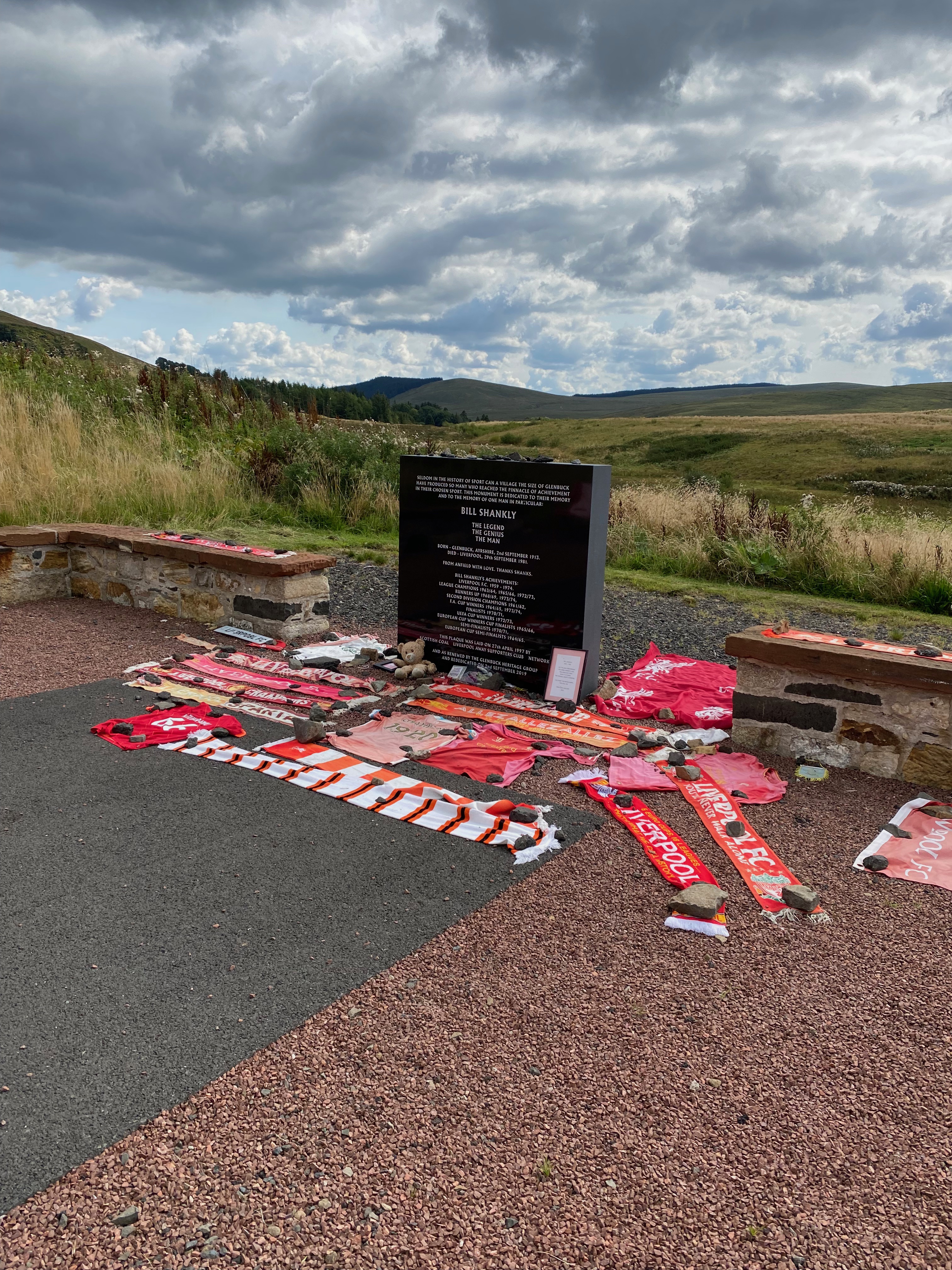
Image: The memorial to Bill Shankly
For many years the bustle and life of Glenbuck was almost lost entirely. Opencast mining destroyed the former village’s landscape, including almost all of its architecture (save one church wall), leaving the environment resembling a ‘black moonscape’, according to Sam. Today, owing to decades of tireless campaigning by people like Barbara and Sam, memories of the village are being kept alive. The area has been transformed, and a steady stream of people travel from all over to see the site at Glenbuck each day. Visitors can read about the history of the village on information boards put together by the Scottish Mining Restoration Fund and East Ayrshire Council which have been informed by Sam’s extensive local knowledge, or pay tribute to Bill Shankly at the memorial installed by the Liverpool Away Supporters Club. Thanks to these continued efforts, the voices of those who lived and worked in this small mining village are being heard once more.
